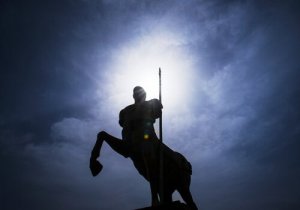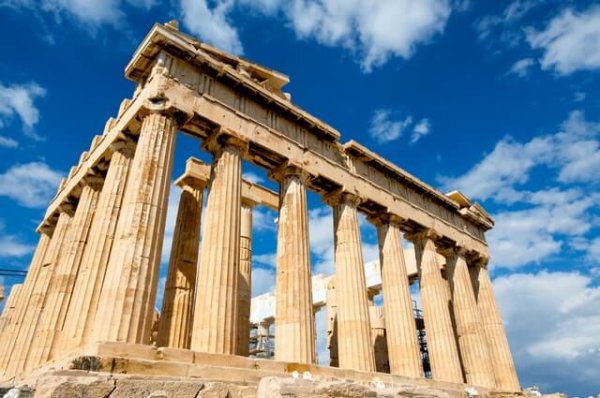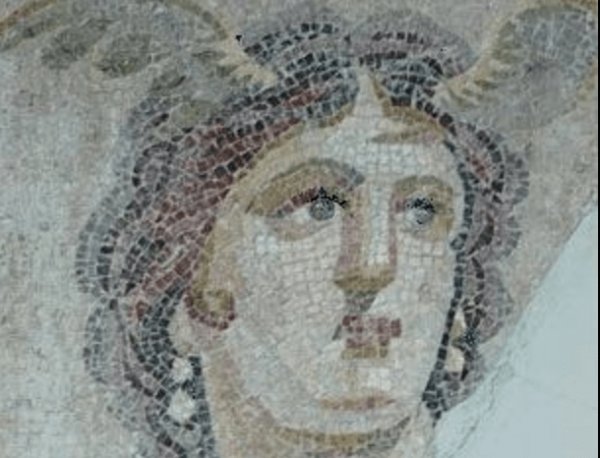The Myth of Chiron, the Healer

The myth of Chiron, unlike other myths, tells us of a wise, noble, and skillful centaur, very different from other centaurs. You may know that, in Greek mythology, centaurs were creatures with a human head and torso and the body of a horse. In general, they were impulsive and, basically, wild beings.
People say that the myth of Chiron is closely related to the professions of the doctor and the psychologist. In fact, the word “Chiron” etymologically means “skilled with the hands” or “the one who cures with the hands”. The word “operating theater” in many Latin languages derives from this character’s name.
However, he’s also known as “the wounded centaur”, a symbol of someone who knows how to give help but also how to ask for it at the right time. In the myth of Chiron, we can see a great deal of humanity. It emphasizes the importance of mutual recognition of our vulnerabilities as a source of compassion.
“Health is the greatest possession. Contentment is the greatest treasure. Confidence is the greatest friend. Non-being is the greatest joy.”
-Lao Tzu-

The myth of Chiron
The story of Chiron begins when the titan Cronus, son of Uranus, came to Earth to look for Zeus. In his journey, he came across an oceanid (sea nymph) called Filiria. Cronus fell obsessively in love with her and wouldn’t leave her alone.
Troubled by this harassment, Filiria asked Zeus to turn her into a mare so that the troublesome titan would leave her alone. However, Cronus discovered the oceanid’s plans and turned himself into a horse to try to possess her. Tormented by the situation, Filiria escaped and went into the Pelasgian Mountains.
In that remote place, she gave birth to a son. It was a tortuous birth and. as soon as she saw her child, she cried out in horror. Her son was half-boy and half-horse and she rejected him immediately. So, she again went to Zeus and asked him to turn her into a tree so that she wouldn’t have to breastfeed her child. Zeus consented to her request and turned her into a linden tree.
A noble centaur
Chiron was left abandoned beside the tree but the god Apollo and goddess Athena took pity on him and adopted him. Under their guidance, he grew up as a kind and wise being, interested in many different arts, but especially in medicine. It filled him with joy to be able to provide relief to those who were suffering and spiritual strength to those who were close to death. He was very skilled in the healing arts and soon became famous. Many asked for his help and advice.
The legend says that Chiron saved a hero named Peleus. The latter had received a gift of a wonderful sword from Hephaestus, the god of fire. He then seduced the wife of a man known as Akash, who then set a trap for him to take revenge.
He convinced him to go on a hunt, and while he was away, he stole his sword and left him at the mercy of the centaurs, who were generally quite violent. Chiron managed to save him and they became great friends from then on.
Peleus had a son named Achilles. His mother, Thetis, burned his whole body and then covered him with ambrosia, believing that this would make him immortal. Horrified by this ritual, Peleus snatched the son from Thetis before she had the chance to cover his heel with the elixir.
He then handed him over to Chiron to be brought up and educated. The centaur noticed that the child’s heel was burnt and the first thing he did was take the heel bone of a giant and insert it into the wound. This is how we get our famous expression “Achilles’ heel”.

A wounded centaur
The myth of Chiron says that, on one occasion, he was accidentally wounded by Hercules, or Heracles, who was one of his great friends. The hero was fighting with other centaurs and unintentionally shot one of his arrows at him, wounding him on the knee.
The centaur began to writhe in pain. Yet, he had been given immortality. Because of that, he could suffer but couldn’t die. The wound never healed and left him in constant agony. As a result of this, he begged the gods to help him take away his immortality so that he could die and escape from so much suffering.
The gods listened to him and consented. Therefore, Chiron finally gave up his immortality to Prometheus, a titan who was saved from suffering by this significant gift. Because of his goodness and his exemplary life, the gods decided to turn him into a constellation – which we now know as Centaurus – so that he would shine forever in the sky.
All cited sources were thoroughly reviewed by our team to ensure their quality, reliability, currency, and validity. The bibliography of this article was considered reliable and of academic or scientific accuracy.
Gallardo, S. T. (2010). El Mito de Quirón, la Actitud Terapéutica y la Perspectiva Fenomenológica del Analista. Encuentros. Revista Latinoamericana de Psicología Analítica, (1), 18-26.
This text is provided for informational purposes only and does not replace consultation with a professional. If in doubt, consult your specialist.








